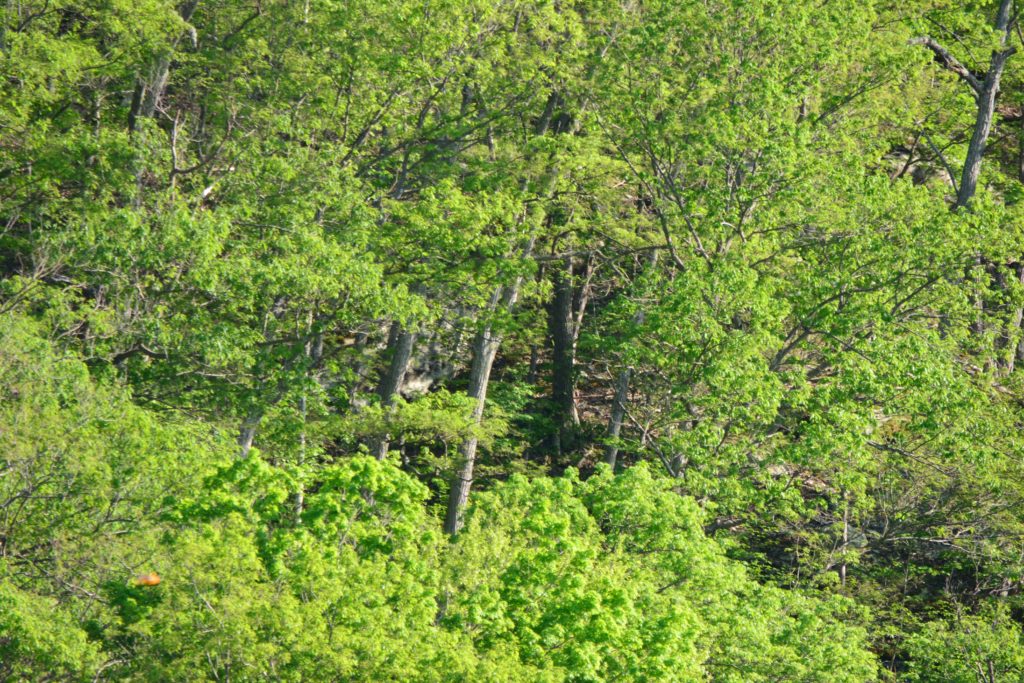Vol. 5 Issue 4, Fall 2000

By Stan Shetler
The following article is a transcript of testimony given by Stanwyn G. Shetler on August 2, 2000 at a hearing of the Loudoun County Planning Commission on Revising the Comprehensive Land-Use Plans
Ladies and gentlemen, thanks for the opportunity to say a few words in support of establishing mechanisms for saving natural greenspace.
I am a longtime resident of eastern Loudoun County and a retired botanist and former Deputy Director of the Smithsonian Institution’s National Museum of Natural History.
Currently, I’m Botany Chair of the Virginia Native Plant Society.
I’m here to speak for the concept of the A Green Infrastructure set forth in the proposed Land-Use Plan, because I see it as a means of preserving what is left of our habitat and rich heritage of fauna and flora in Loudoun County. People everywhere are desperate to save natural habitat as development consumes our open space.
In just the past two days, for example, I have been asked by local citizens in three communities in nearby Maryland to evaluate habitats botanically that they are frantically trying to save.
Land-Use Affects Biodiversity and Habitat
It is critical in this enlightened day to consider the impact of land-use decisions on habitats and their ecology and biodiversity. The present natural greenspace in Loudoun County is but a remnant of what once was here, especially in the eastern part of the county, even as recently as 1973, when my family moved here. In terms of natural habitat, Loudoun is now a piece of Swiss cheese, and the habitat that remains is the last hurrah of an environment that was once far more viable for plants and animals.
Absolute minimums, not averages, govern what survives. An ecosystem does not crash all at once but habitat by habitat and species by species. There is no single threshold. Every species has its own. Every reduction of habitat will cross the threshold of several to many species.
Fragmentation of habitat is the great enemy of species. Research has shown, for example, that five 10-acre parcels of forest are not equivalent to one 50-acre parcel of forest. Many species will only survive as long as there are large, unbroken patches of habitat.
Riparian Buffers
Riparian buffers are essential but not just to filter out pollution and control storm water. They constitute islands and corridors of survival and passage (migration and other movements) for plants and animals. There are no safe averages or minimums for riparian habitats. Every foot sliced away is bound to have repercussions for the ecology and species diversity of the buffer. In our land-use planning, we should be as liberal as possible with these corridors, not as stingy as possible.
The Green Infrastructure
The Green Infrastructure defined in the proposed revision of the Land-Use Plan represents the skeletal remains of a once vast matrix of natural landscapes in our county. Surely, we must set absolute limits to the destruction of this life-giving matrix, We should guarantee that development will be set in a matrix of natural environment–not natural environment in a matrix of development.
Greenspace should not be managed space that becomes merely another part of the built environment. The token greenspace that developers tend to leave in the interstices of their developments in actuality represents amenity landscaping having little to do with the original natural space.
Amenity landscapes are wild landscapes that have been manicured, sanitized, and homogenized into sterility, until only the whitetail deer, gray squirrels, Canada geese, starlings, English ivy, and other tough survivors are left to battle it out with our pets and pesticides. Such an artificial ecosystem is an ecosystem in deep ecological trouble.
The Green Infrastructure is an essential, if desperate, last effort to save some of Loudoun’s beautiful landscape and biodiversity. It must be sacrosanct, meaning no golf courses and ballfields in the bottomlands.
At present, the wild plants and animals of Loudoun County face double jeopardy. The uplands can be turned into housing, industrial parks, and malls, and the stream bottoms can be destroyed for golf courses and ballfields.

